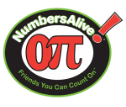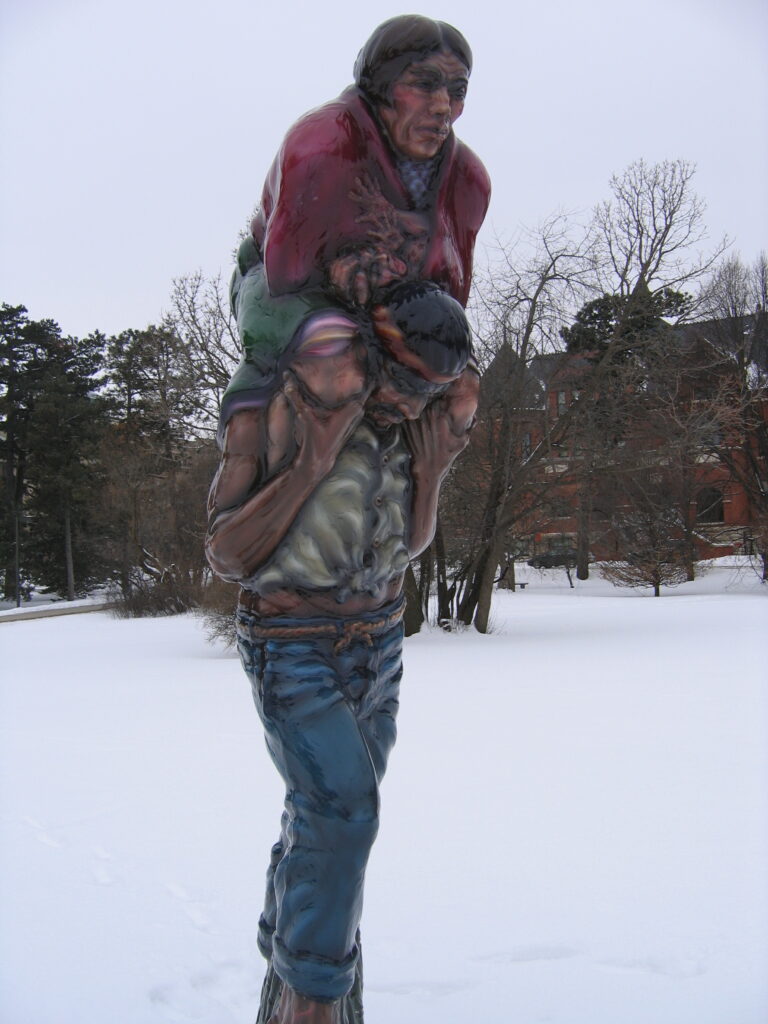
About the Art
This over-lifesize, totem-like, monumental sculpture is one of Luiz Jimenez’s signature sculptures. Border Crossing is known in Spanish as Cruzando el Rio Bravo, is constructed out of fiberglass, and commemorates immigrants crossing the border in search for a better life. The sculpture recognizes the hundreds of thousands of immigrants and their illustrious journey for survival, including Jiménez’s grandfather, grandmother, and father.
Depicting a man carrying a woman with an infant in her arms, it symbolizes the heartache of crossing the border from Mexico into the United States through the Rio Grande River. As the viewer, you can see the peril of this situation through the crying child, exhausted father, and pained expression on the mother’s face.
When discussing the art at Blanton Museum’s Art Collection, Jiménez explained, “I had wanted to make a piece that was dealing with the issue of the illegal alien. People talked about aliens as if they landed from outer space, as if they weren’t really people. I wanted to put a face on them: I wanted to humanize them.”
About the Artist
Born in El Paso, Texas in 1940, Luis Jiménez was a Mexican-American sculptor whose daily life influenced his artwork. He was fascinated with popular culture, relating his art to everyday experiences. He was named a Goodwill Ambassador by the City of Houston and was awarded the Governor’s Award in New Mexico in 1993. In 1998 he became a Distinguished Alumni of the University of Texas. His medium of choice was fiberglass which gave his creations a pristine finish and a tactile surface that further emphasized the power of his sculptures. He passed away in 2006 at his studio in Hondo, New Mexico.
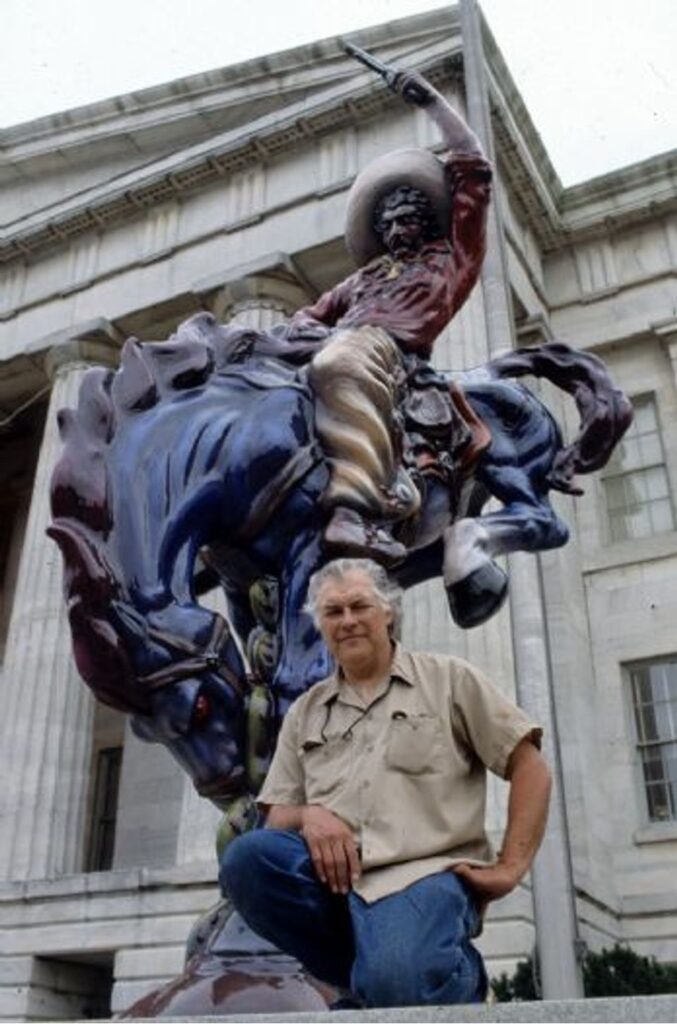
If you come to Washington, DC, stop by the G Street entrance to the Smithsonian American Art Museum/Portrait Gallery to see Vaquero installed near the entrance. The above image from the SAAM website shows Jiménez standing by his sculpture, Vaquero.
See below images of more art by Jiménez
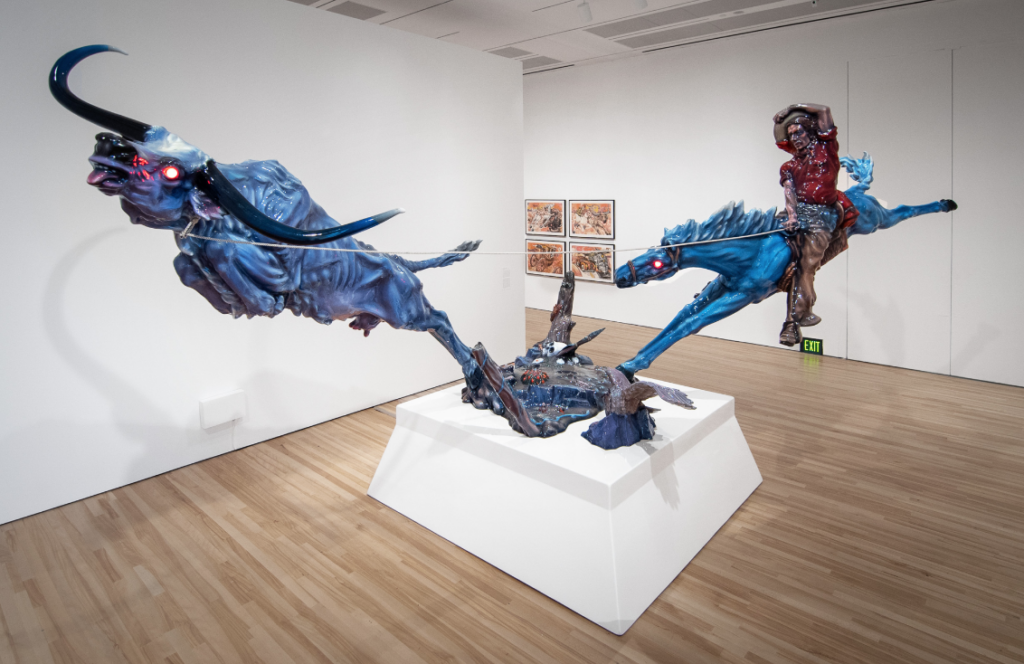
Progress II, 1976, Blanton Museum of Art, the University of Texas at Austin
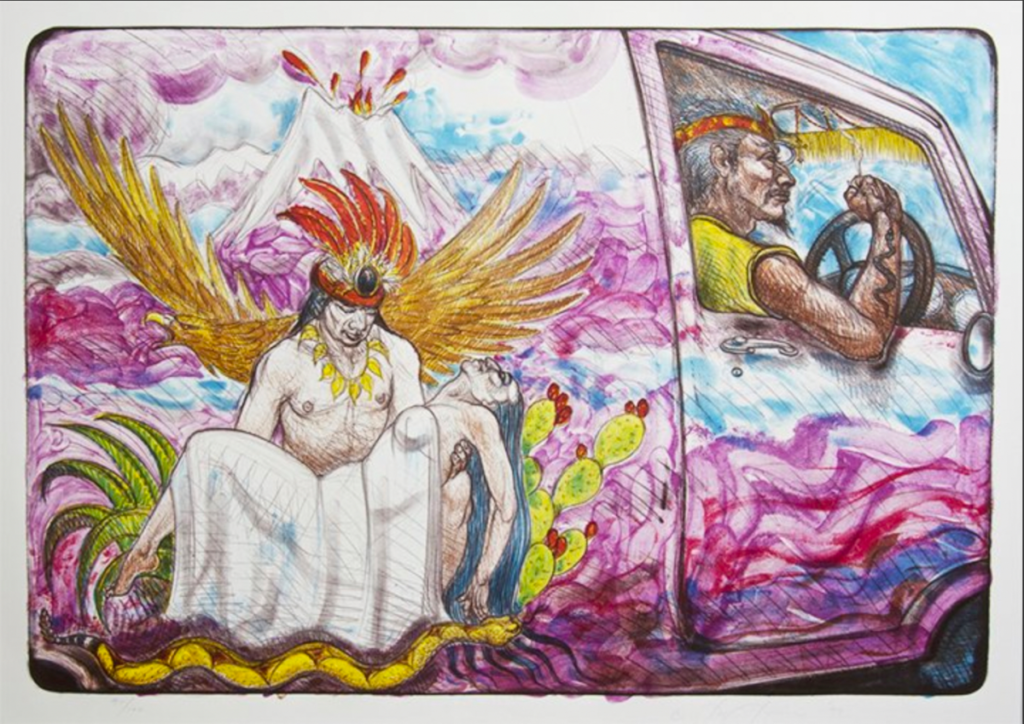
Cholo and Van with Popo and Ixta, 1997, collection of Gilberto Cárdenas, Austin, Texas
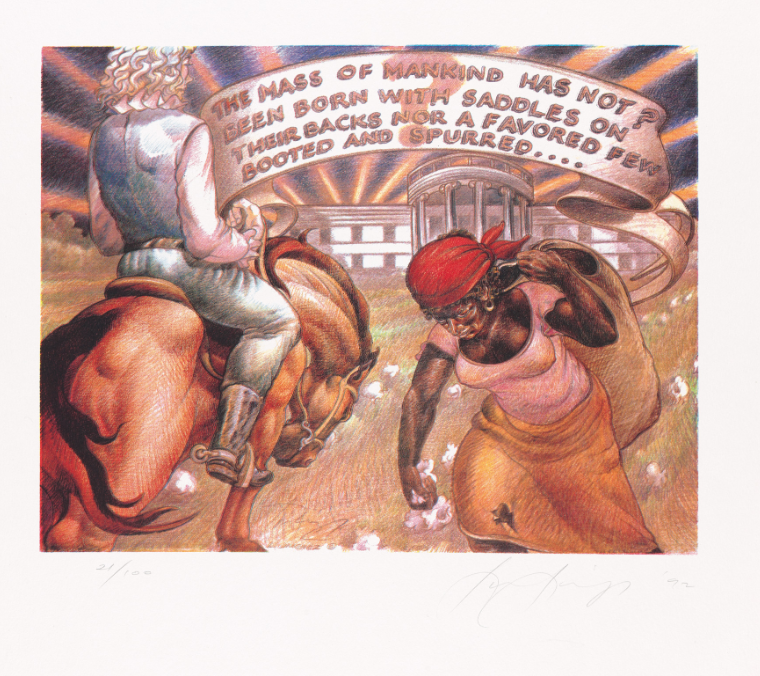
The Mass of Mankind from 10: Artist as Catalyst, 1992, Museum of Modern Art, New York City, NY
Relevant Terminology
A Totem is a natural object or animal that is believed by a particular society to have spiritual significance and that is adopted by it as an emblem. It can also refer to a person or thing that is regarded as symbolic or represents a particular quality or concept. For more information: https://en.wikipedia.org/wiki/Totem.
For a different use of the word “totem” read the June 26, 2023 New York Times article, “How Meals Became Totems.” The New York Times International Replica Edition (pressreader.com)
Fiberglass is a reinforced plastic material composed of glass fibers embedded in a resin matrix or a textile fabric made from woven glass filaments.
Learning Guide
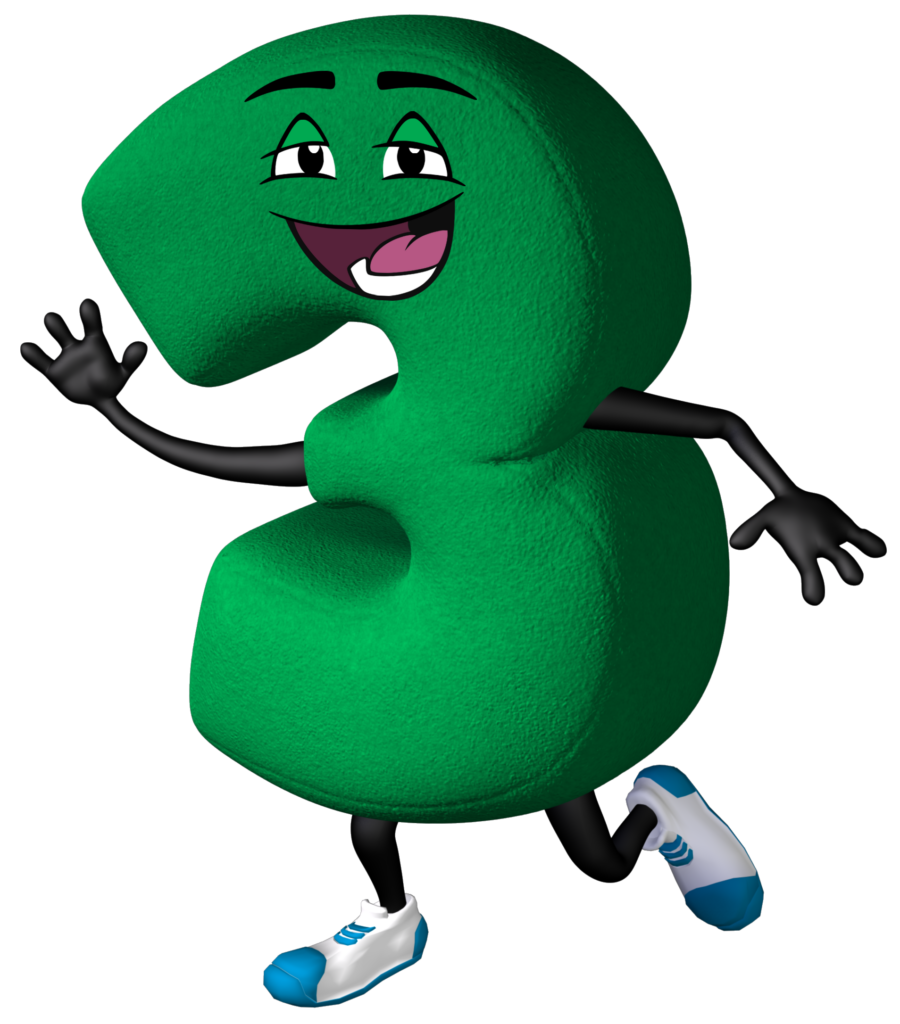
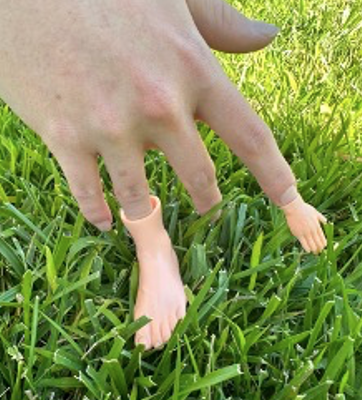
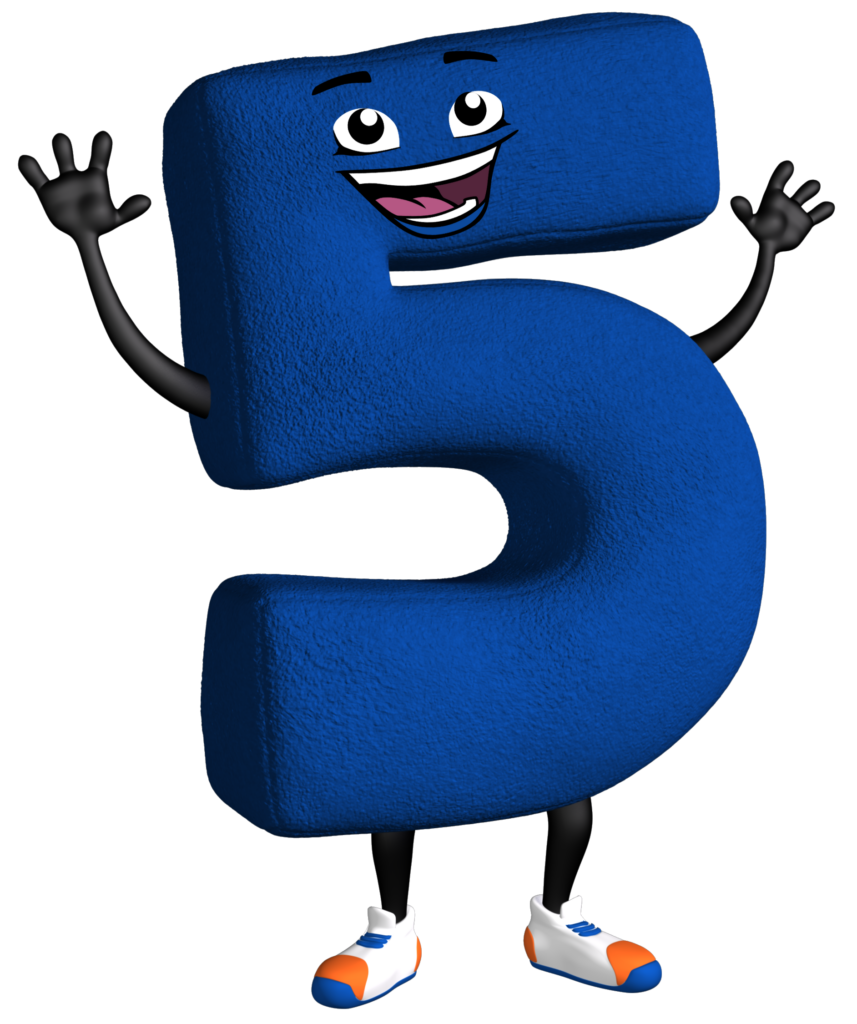
- What do you think the title has to do with the art?
- Why do you think Number Characters 3 and 5 speak about the art?
- Why do you think Luis Jiménez made Border Crossing larger than life?
- Why do you think Dr. Klemm enlarged the face of the child?
- Why do you think Number Character 5 is standing on the enlarged face of the child?
- How does the shape of the red image with white numbers relate to the art spread?
- How does the hidden blue image relate to Border Crossing?
- How do the three individuals of Border Crossing relate to the artist?
- Dr. Klemm found bins full of small feet and hands for sale at the Phoenix Art Museum shop. The photo above shows them as finger puppets. Why do you think she immediately thought of Border Crossing when she found them?
- What ideas do you have as to why the museum shop was selling small feet and hands? How might you use them?
- What is the difference between a column and a totem?
- Can you think of other totems or columns created by artists of other cultures?
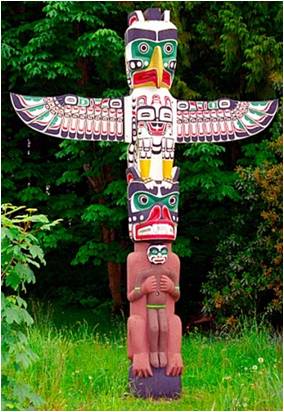
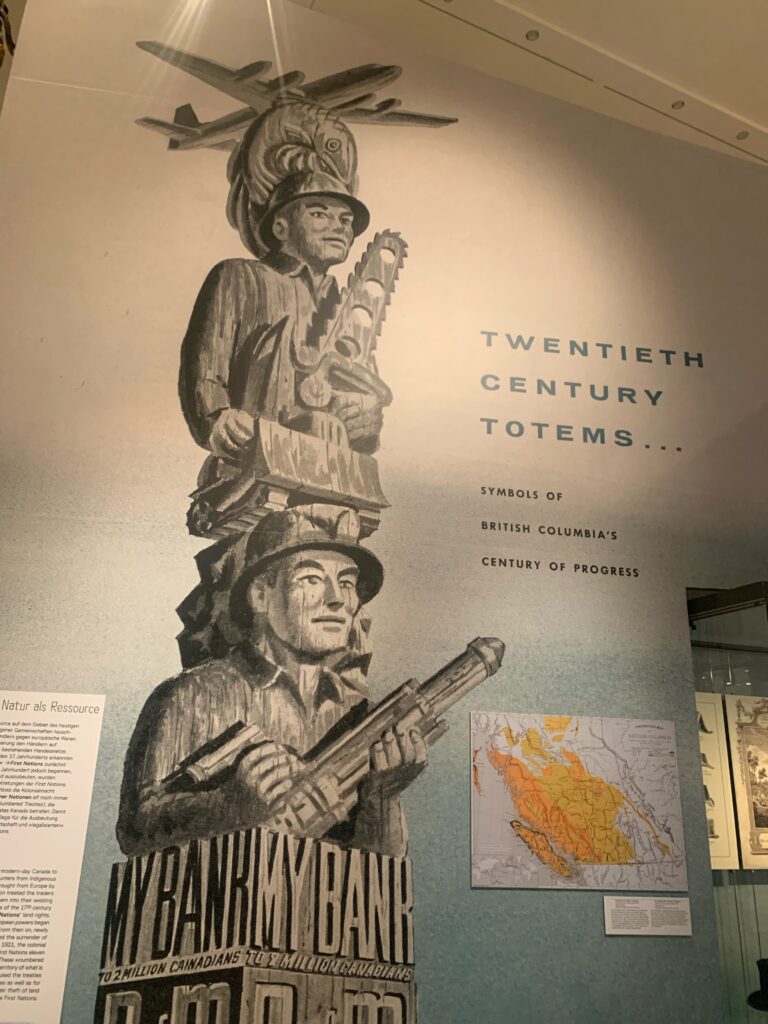
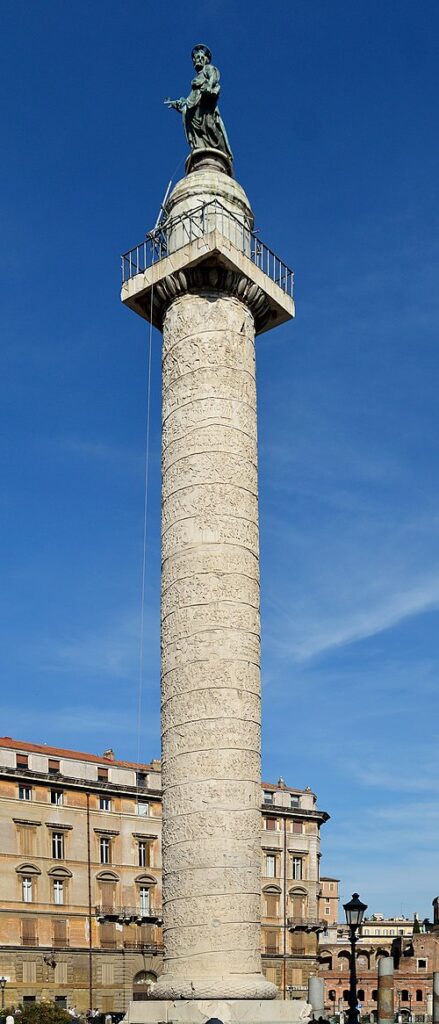
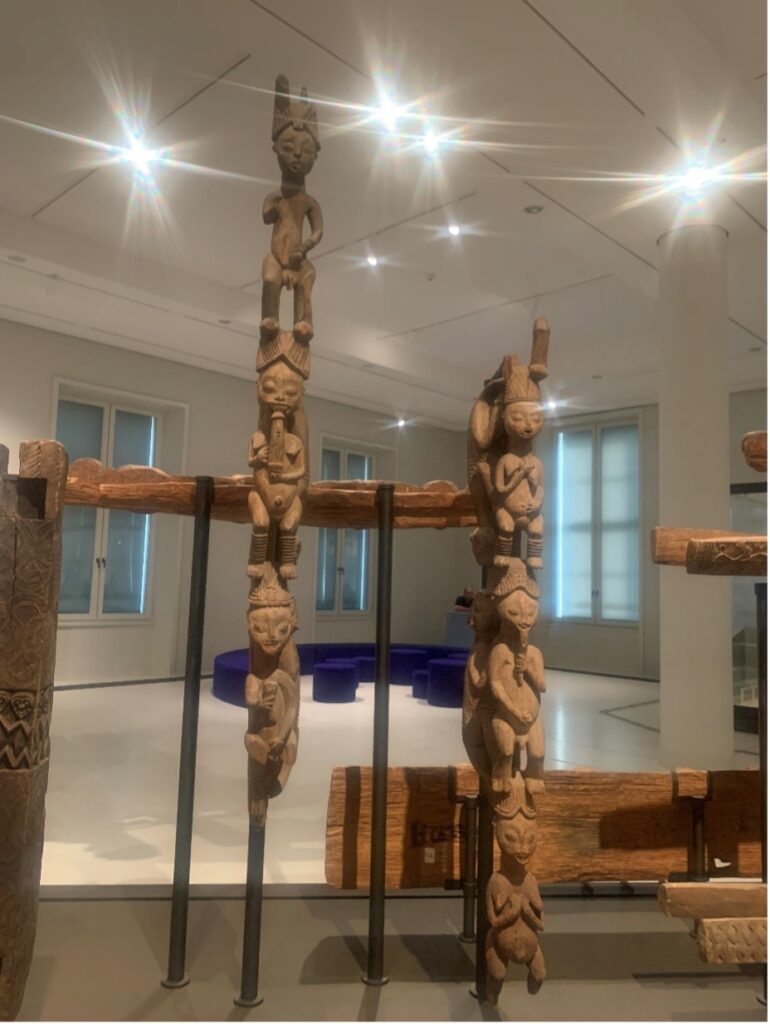
From left to right, find totems or columns across cultures.
- Totem from Canadian Indigenous Tribe, photo courtesy of https://archaeologymuseum.ca/learn-from-home-canada/
- Photo by Rebecca Klemm when visiting the Humboldt Forum in Berlin during June 2023.
- Column of Trajan (a three-part funerary column commemorates the defeat of Dacia), photo courtesy of Wikipedia
- Cameroon, 19th century, constructed of wood and pigment. Photo by Rebecca Klemm while visiting the Humboldt Forum in Berlin during June 2023.
